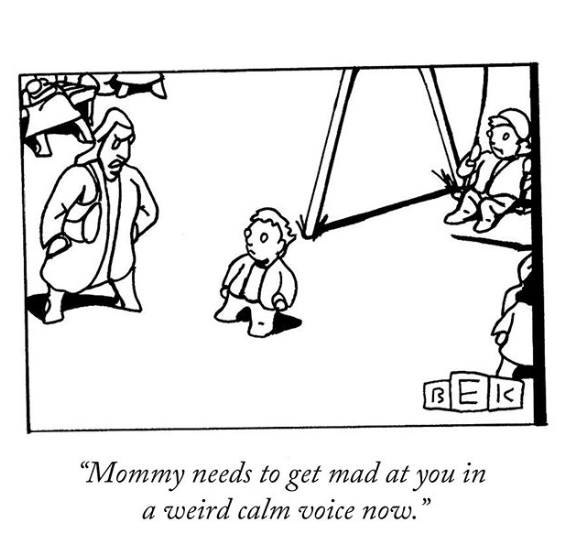Remorse: ‘Say you’re sorry’ isn’t enough:
Seeing your child cause tears in another is a difficult moment. Often a caregiver’s immediate reflex is to quickly command “Say you’re sorry!” However, there is far more opportunity to teach children to ‘clean up’ their emotional impact on others when navigated appropriately.

Why not jump to ‘sorry’? Remorse is an unrealistic expectation from the under developed brain. Still by introducing the consequences of ones actions, we can create a platform for remorse once their brains are ready.
There are steps along the way that encourage acknowledging another’s feelings as well as taking responsibility for the impact of one’s actions. It is important to cover each step.
Narrate the situation without emotion or accusation, this acknowledges the other child’s upset:
“You hit Jenny and now she is crying”
“you accidentally knocked Jimmy over and now he is crying”
“you grabbed Billy’s toy from him and now he is crying”
Explain the consequence of your child’s action using ‘when’:
When you hit it hurts
When you grab from someone, they feel upset
When you bump into someone and they fall, they feel hurt, even when it is an accident
Apology:
A simple sorry is not enough.
“You can say to Jenny ‘I’m sorry I hit you and you are hurt’.
“you can say to Jimmy ‘oops, that was an accident – I bumped into you and you fell down’
“you can tell Billy ‘I’m sorry I grabbed your toy, it is better to ask’
It is okay if your child ‘clams up’ at this point. The instruction is more important than the response. The other gets to witness your acknowledgment of the situation. This is enough whether your child responds or not. Both children involved have had an opportunity to learn.
Teaching Forgiveness:
The path to forgiveness often takes a lifetime to truly embrace. If we can teach the ‘offender’ to be responsible then we may also teach the ‘victim’ to be responsible. When one’s pain and upset is acknowledged accurately, this is often enough to lighten their mood and offer forgiveness.
There are many steps along the way that encourage forgiveness. It is important to cover each step.
Narrate what has happened:
“Sammy said he was sorry that he hit you and hurt your arm”
“Sammy said he was sorry that he bumped into you”
“Sammy said he was sorry he grabbed your toy”
Explain the consequence of an apology
“Sammy understands that hitting is wrong”
“Sammy understands that knocking someone over is wrong, even when it’s an accident”
“Sammy understands that it’s not okay to grab your toy”
Acceptance:
“You can say ‘that’s okay Sammy’”
The instruction is more important than the response. The other child then witnesses your acknowledgment of the situation. This is enough. Both children involved have had an opportunity to learn.
Practice:
Grown-ups, this practice seems simple enough. It is not. Try incorporating this into your daily life. Notice how you feel when you are apologized to. Is something missing? How easy is it for you to say “that’s okay, I understand.” How about when you need to apologize to someone. Are you able to truly identify exactly what you did to upset them? Are you able to acknowledge their feelings accurately? These are skills often overlooked as we are so focused on the goal of hearing “I’m sorry” we do not learn how to get there to begin with. This is food for thought for all of us.
